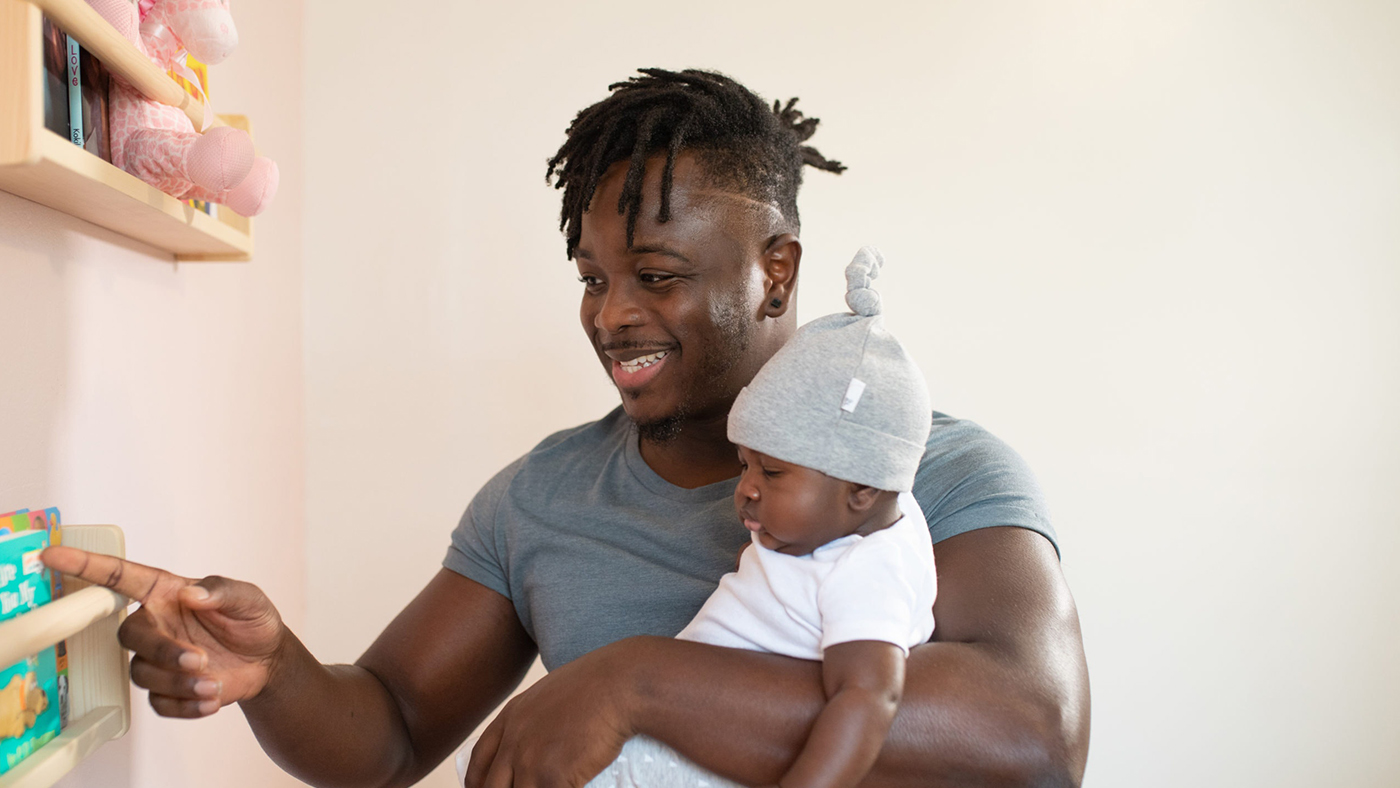Starting to follow the motion of your hand if you point to something

Your baby has been interested in watching you and people around them and has started to show more interest in interactions. You might have noticed they initiate interactions in a variety of ways, perhaps by smiling, moving, or making sounds.
Your baby is also beginning to notice the ways in which you respond to them and the gestures that you use to communicate, you will notice that as well as watching your face they are aware of your hand movements now.
Shared attention and pointing
It will be a little while before your child develops the fine motor, social and communication skills they need to point to share an interest themselves. However, you will notice that they begin to follow the motion of your hand when you point or gesture towards something to bring their attention to a person, object, or event.
The development of joint or shared attention is an important part of the development of communication, and an aspect of communication where you will see the links between your baby’s social and language development.
Joint attention involves gaining and redirecting someone’s attention when communicating with them. The purpose of joint attention is that the people communicating are focused on the same thing and so they can communicate effectively. [1]
Following your gestures and responding to you when you communicate with them is the starting point for your baby’s development of shared or joint attention. When you notice what they are looking at and comment on those things or talk to them about something you know will interest them you are supporting them to develop joint attention.
Joint attention and social development
The development of joint attention can be seen through your baby’s awareness of your gestures and the way in which they use their gaze to share attention with you. It is thought that this early sharing of attention links to the later development of social referencing, which is when your baby looks at you or other trusted people to give guidance about how to respond to a new situation or object. [2]
Joint attention behaviours are thought of as two types, responding to joint attention and initiating joint attention. Responding to joint attention is associated with activity in different areas of the brain whereas initiating joint attention is linked to activity in the frontal cortex. [2]
You will notice your baby responding to joint attention before they start to initiate joint attention. They will initiate joint attention as they build connections in their brain and as higher areas of their brain develop.
The development of joint attention is linked to social development, not only due to its connection to the development of social referencing but also due to a link with understanding others. In order to follow a point or look where another person is looking your baby needs to notice and process information about another person’s attention. [2]
Your interactions with your baby support them to develop the connections in their brain that enable them to initiate joint attention and to share their interests.
What next?
Your baby will begin to copy your movements and gestures and will gradually develop their understanding of these movements and gestures and use them to communicate with others. They will develop the ability to share their interests with you, perhaps by looking towards an object or person before they initiate shared attention by pointing or through a gesture.
References
[1] Leavens, D.A., Sansone, J., Burfield, A., Lightfoot, S., O’Hara, S. & Todd, B.K. (2014). Putting the “joy” in joint attention: affective-gestural synchrony by parents who point for their babies. Frontiers in Psychology, 5, article: 879.
[2] Mundy, P. & Jarrold, W. (2010). Infant joint attention, neural networks and social cognition. Neural Networks, 23, 985-997.